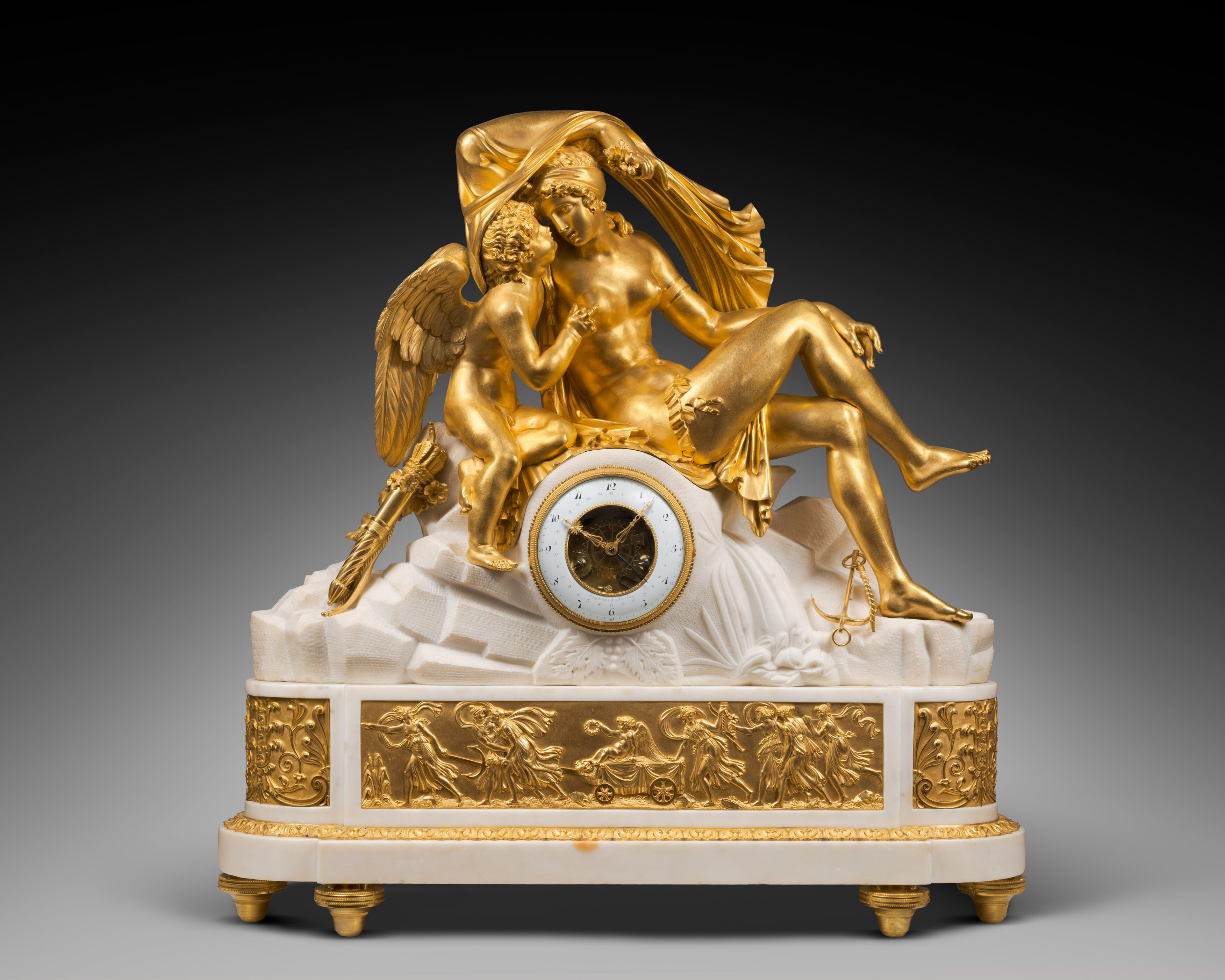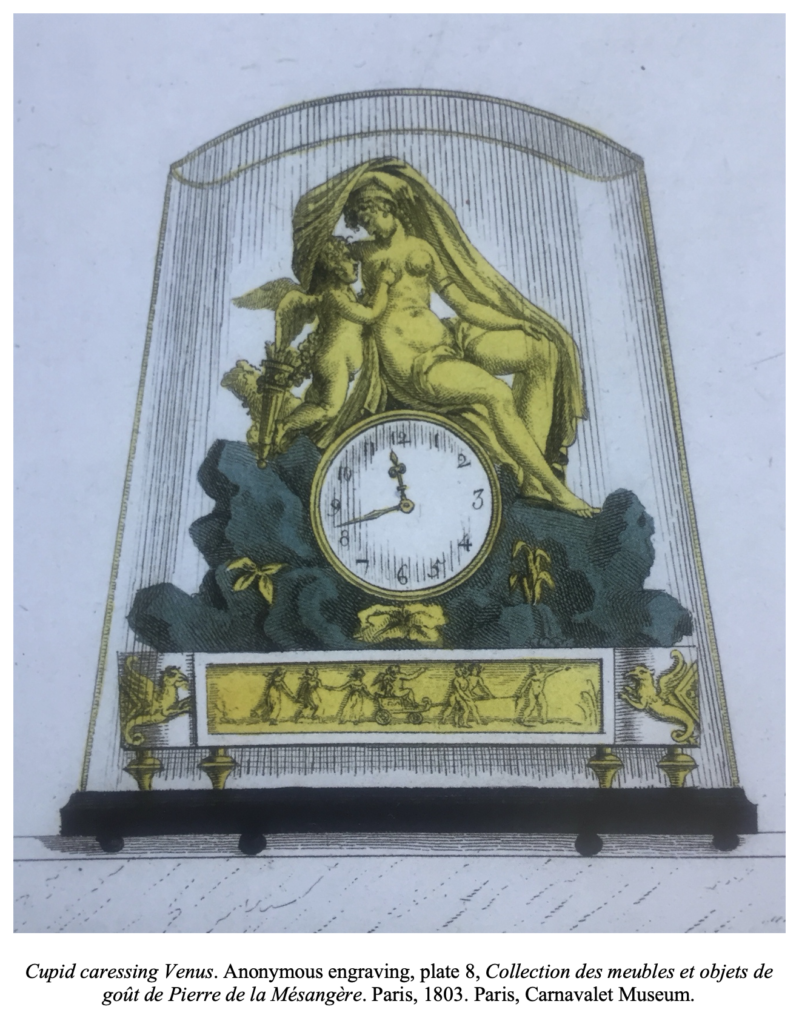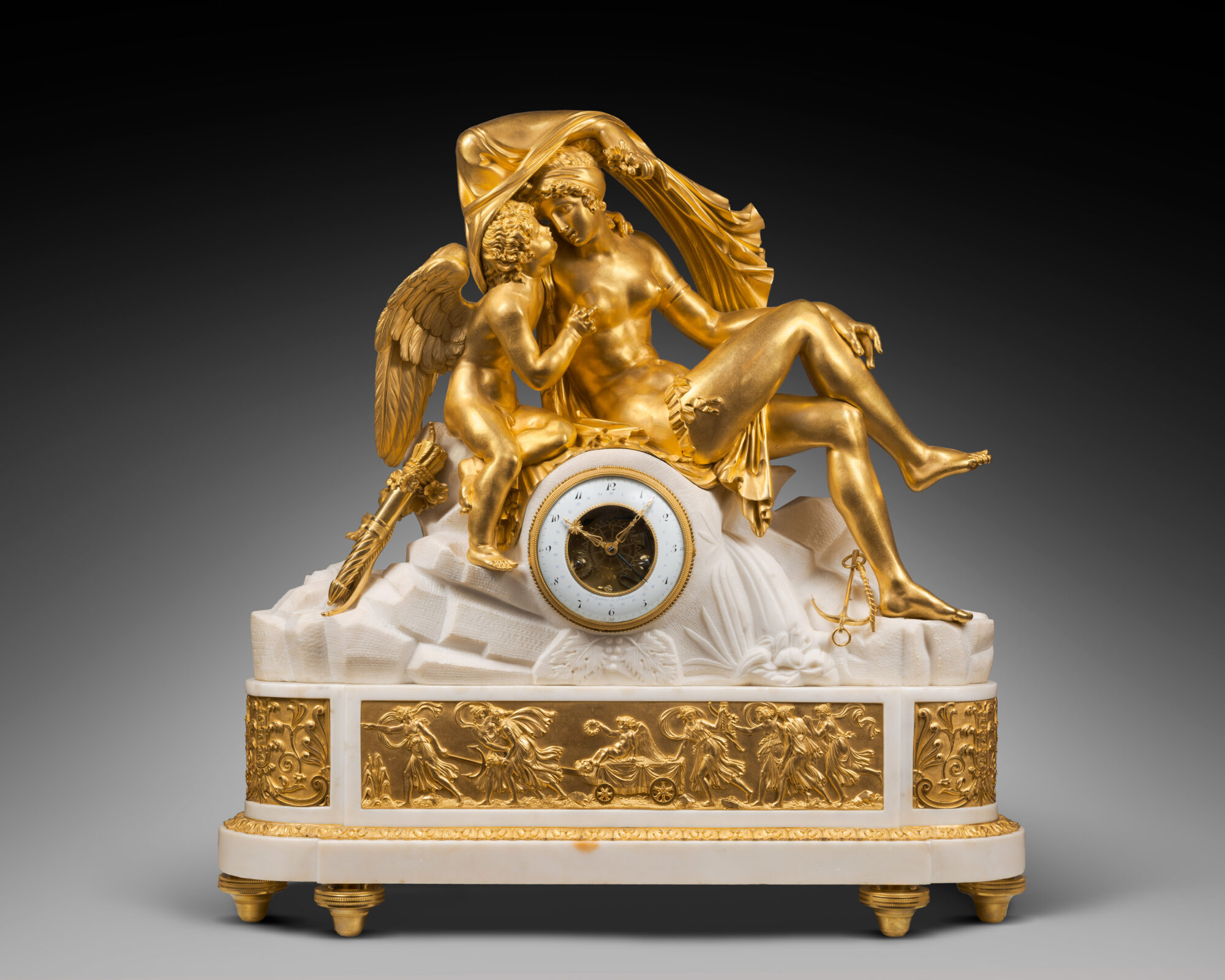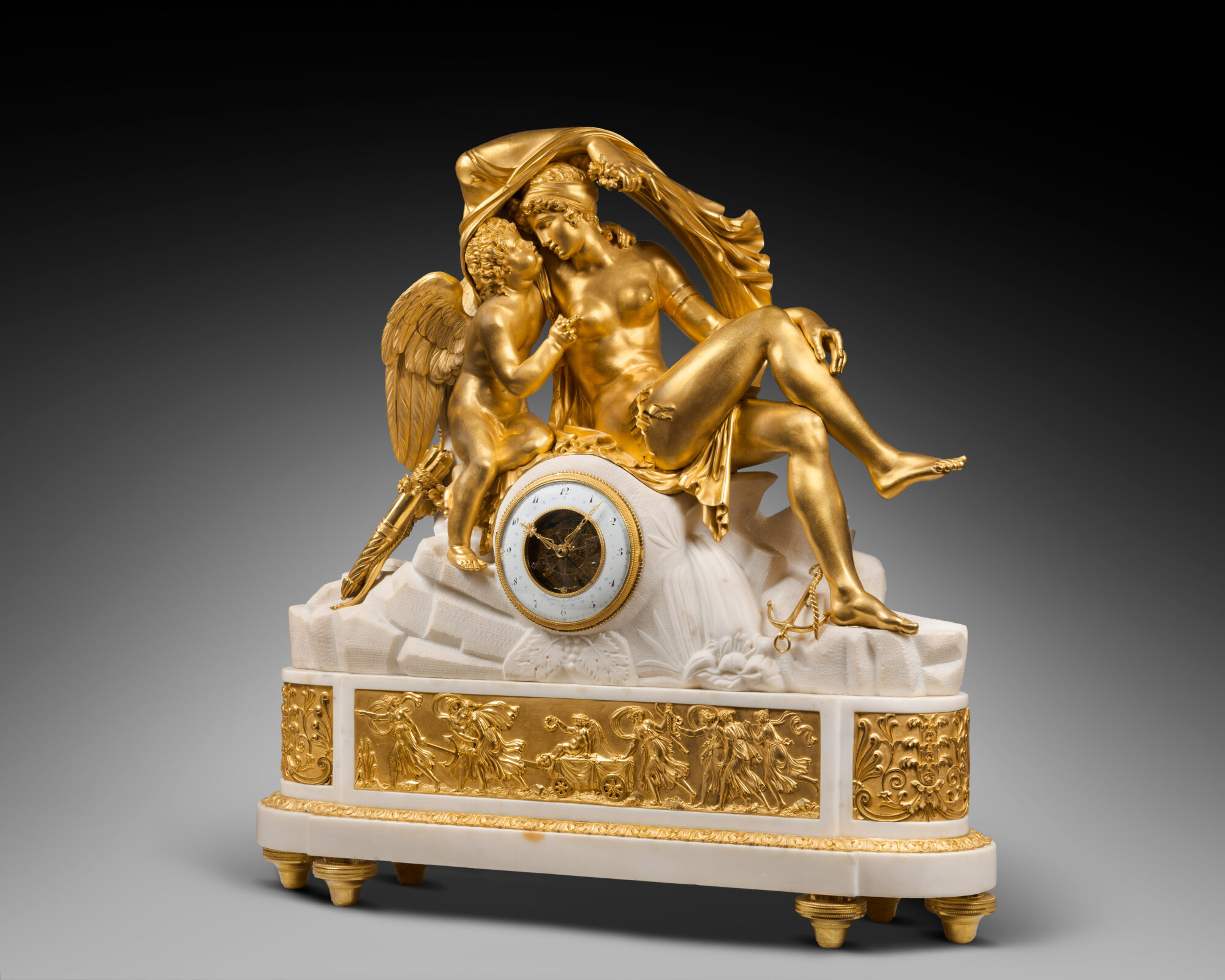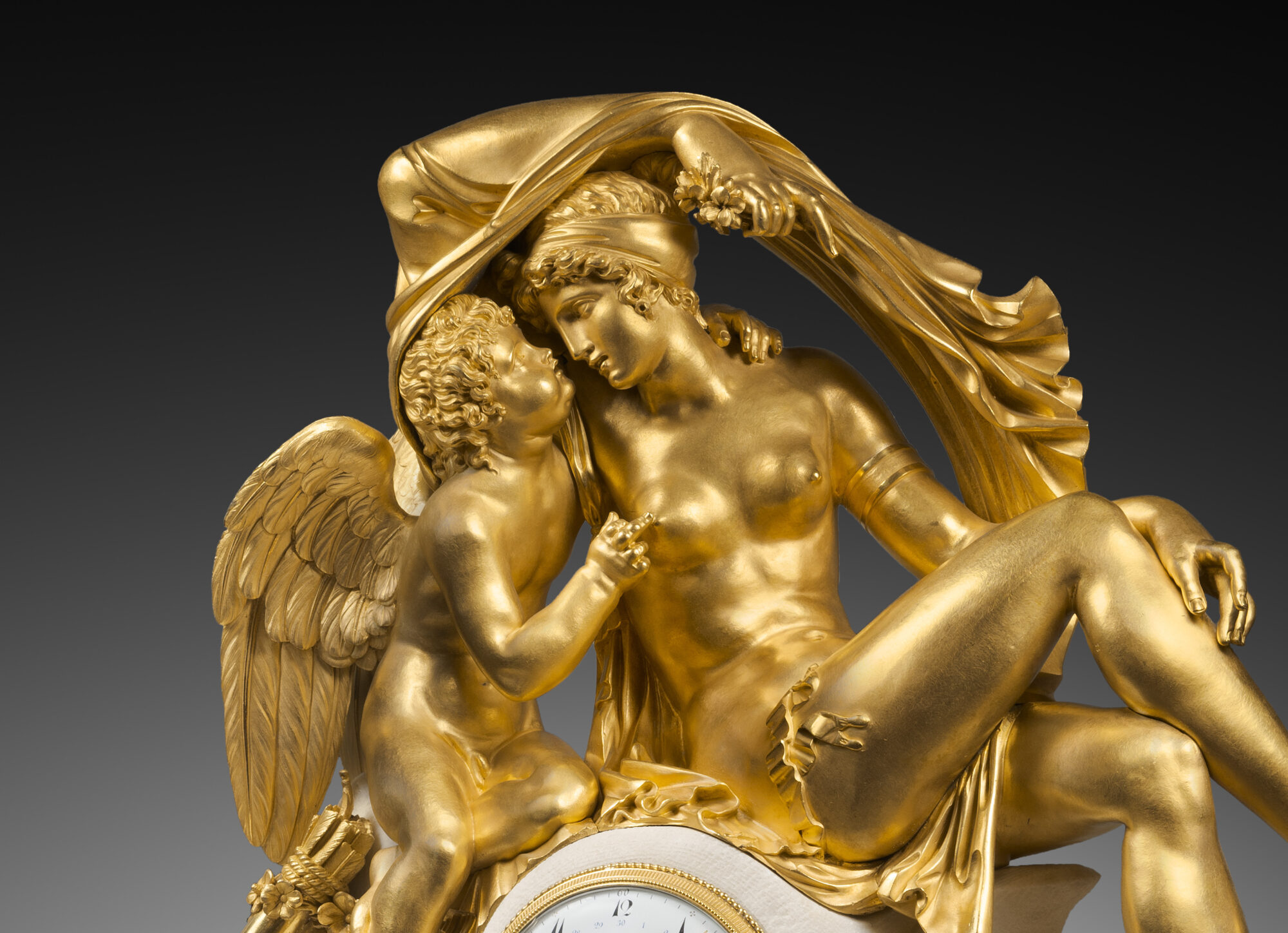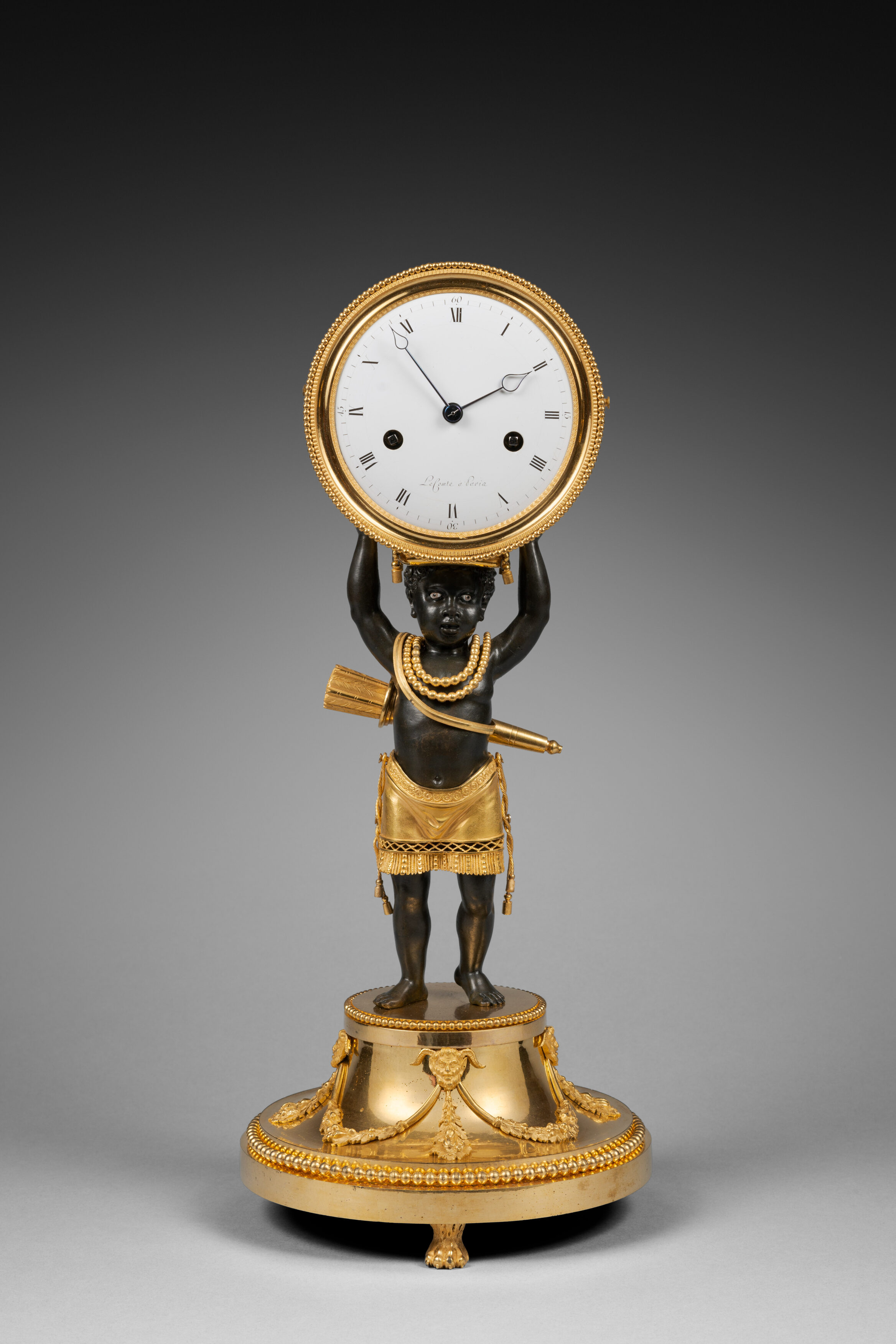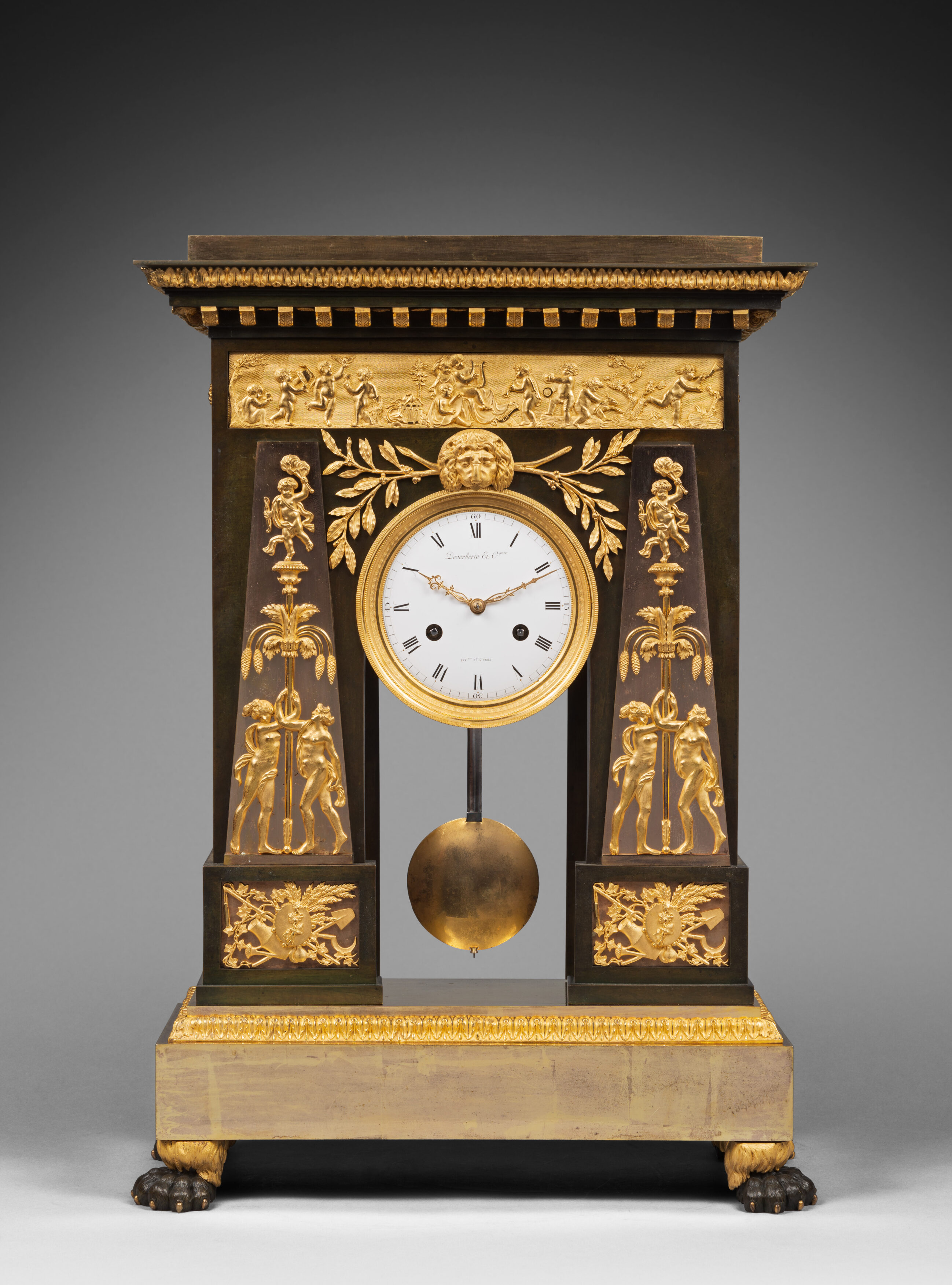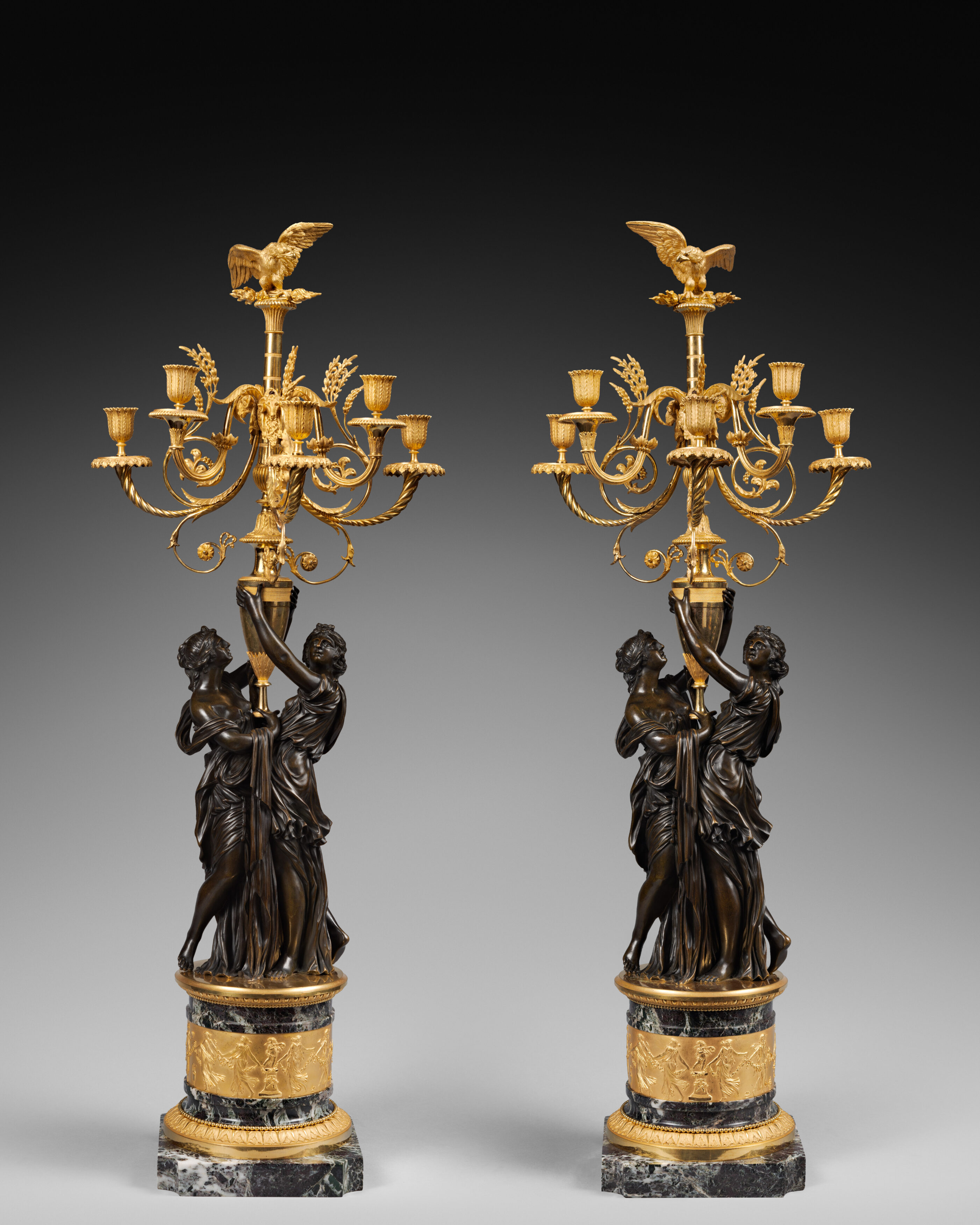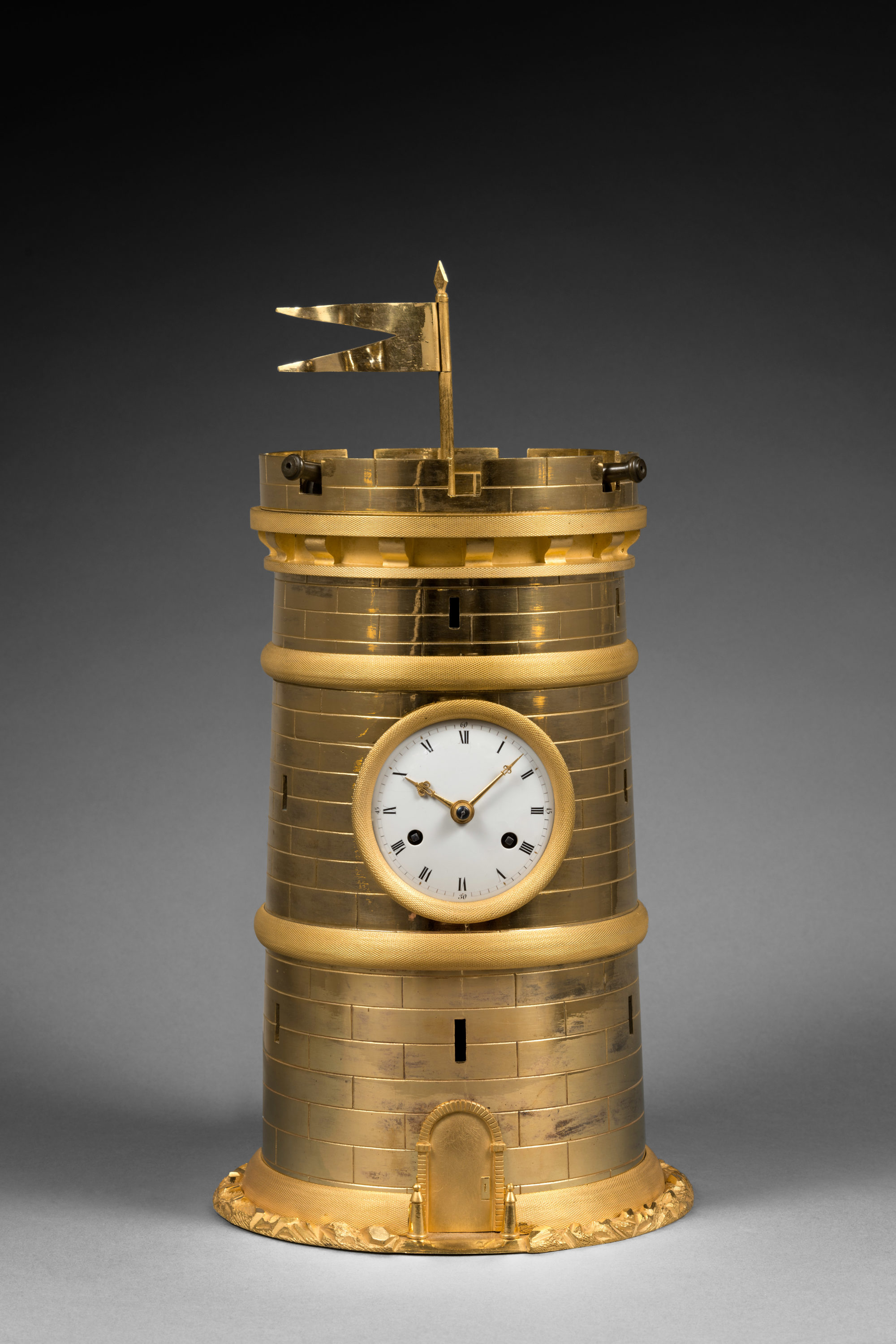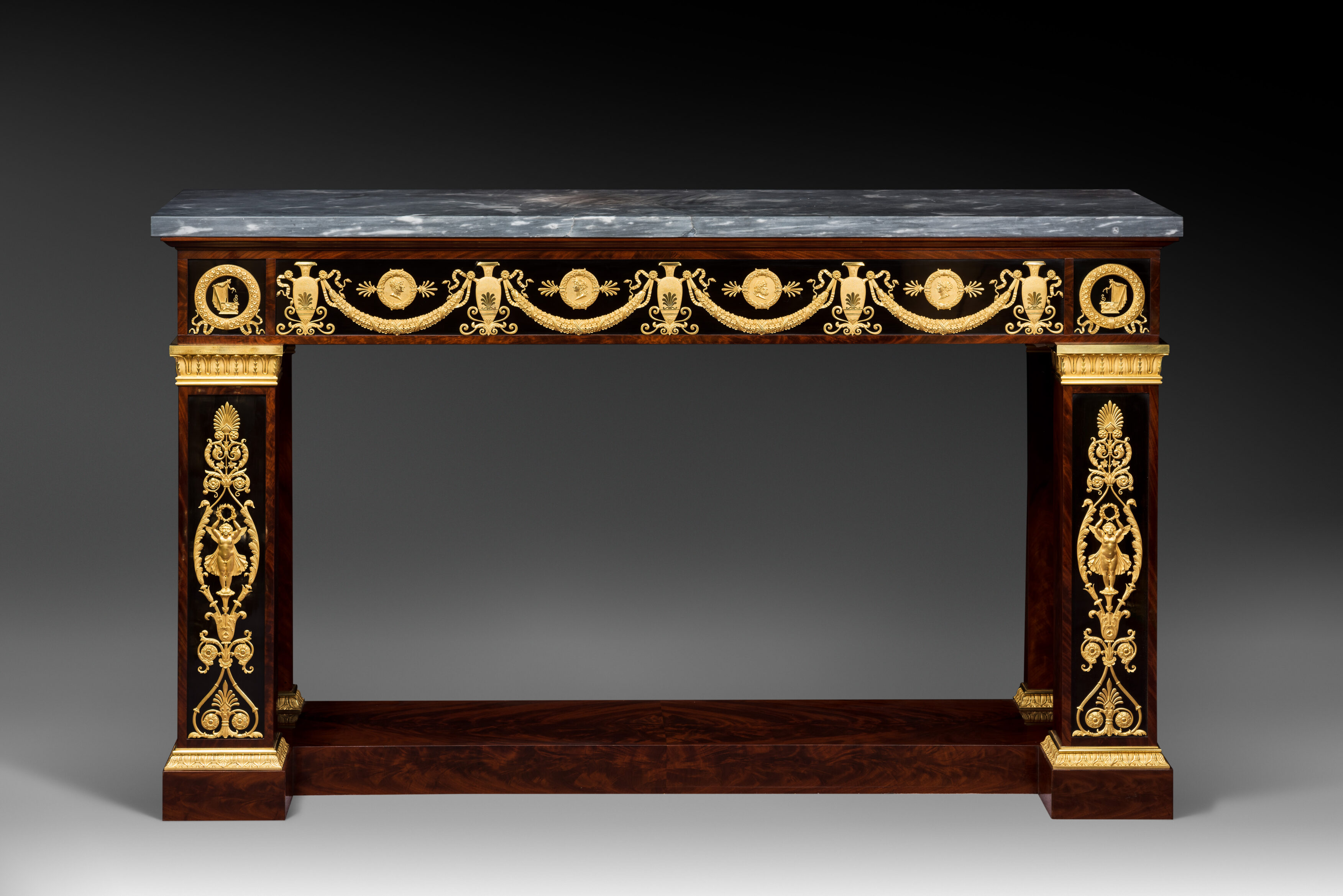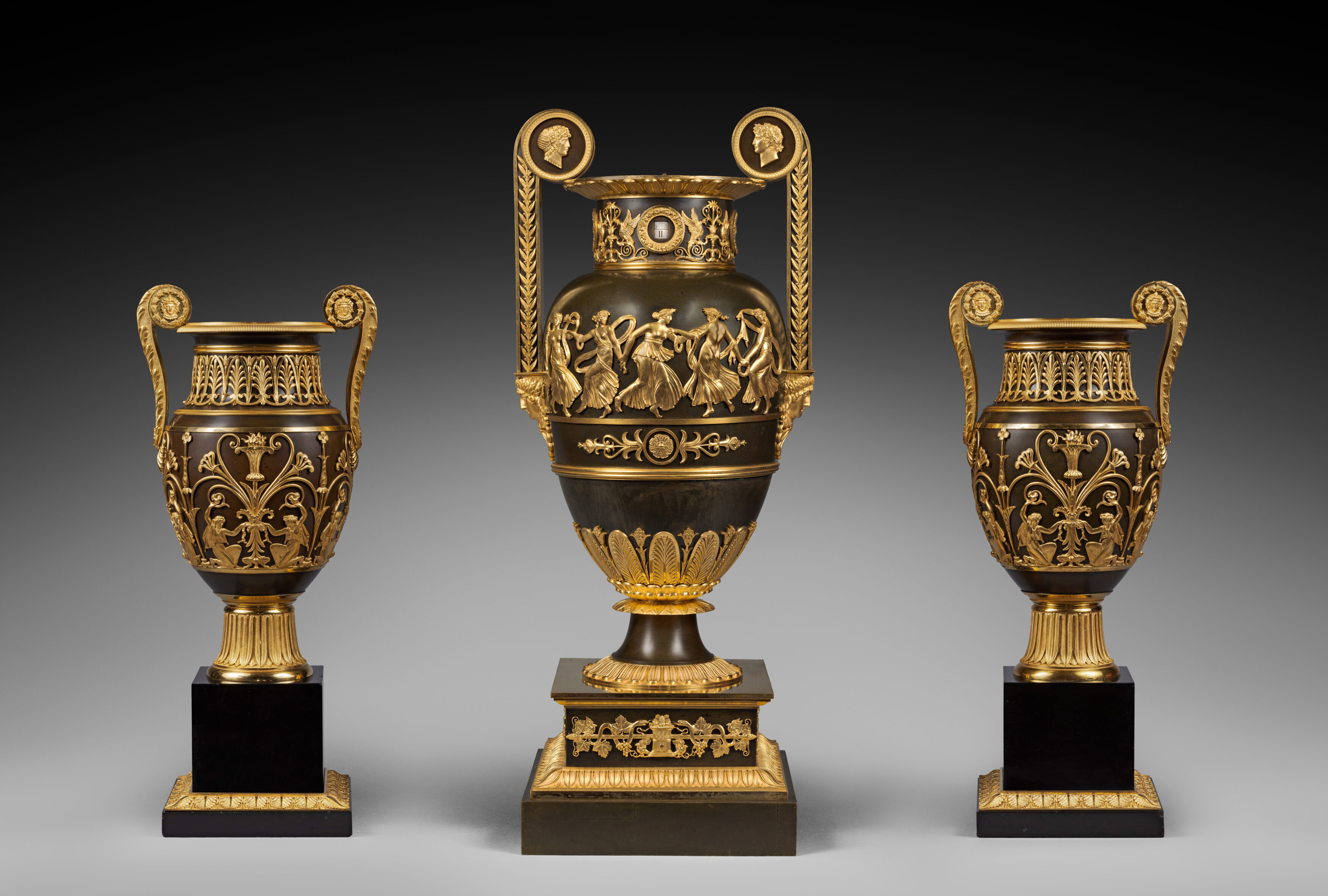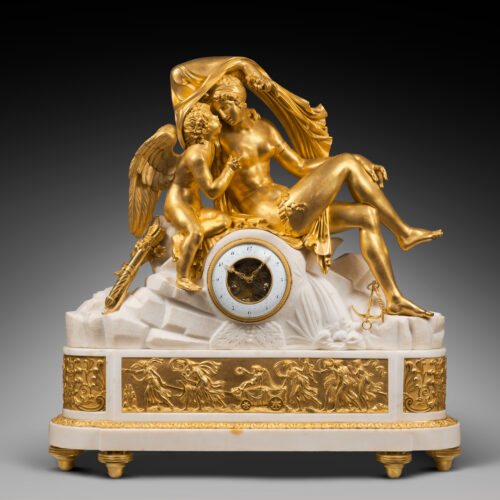An Important Monumental Mantel Clock in White Carrara Marble and Gilt Bronze with Matte and Burnished Finishing
“Cupid Caressing Venus”
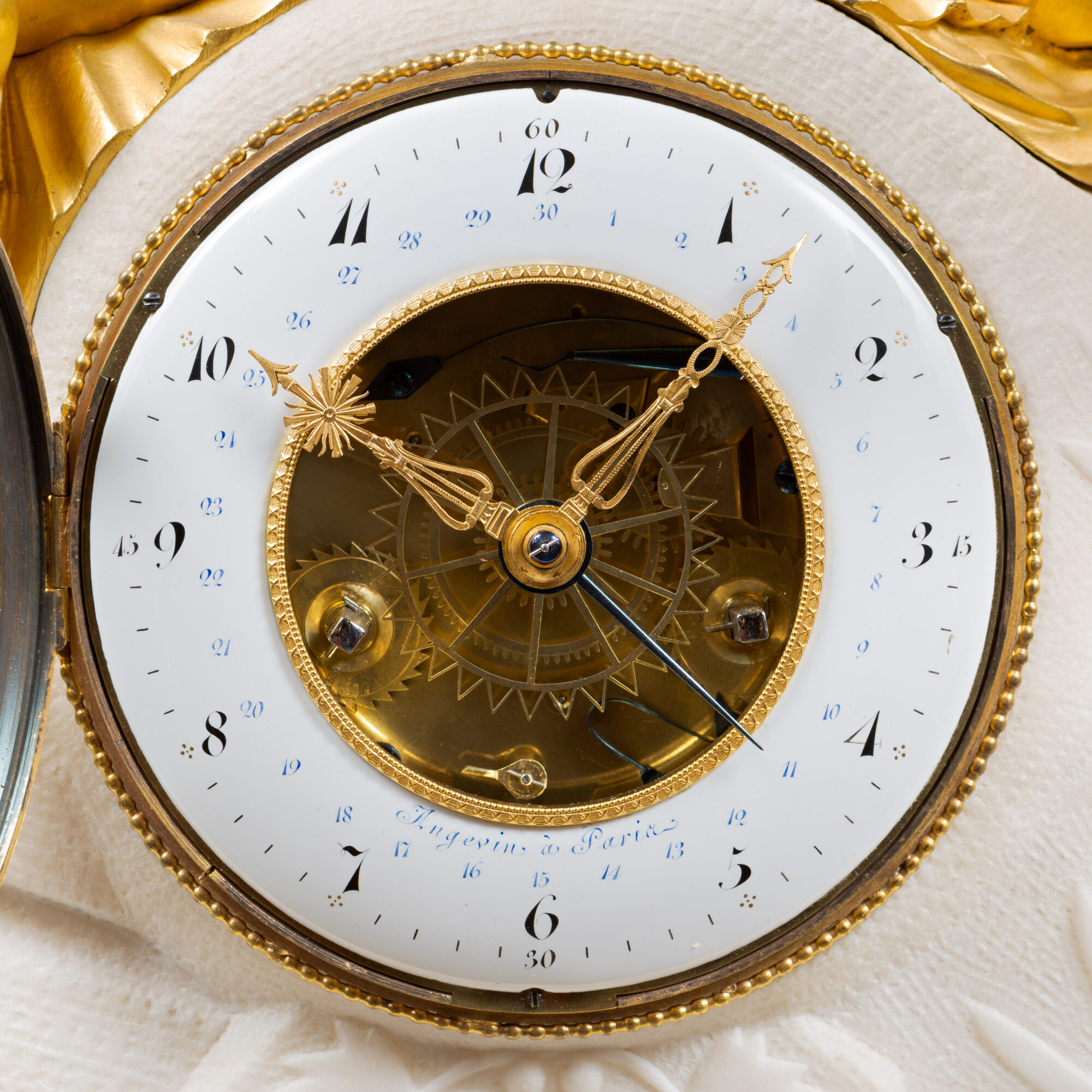
Dial signed “Angevin à Paris” by the clockmaker Angevin
Bronzes attributed to Pierre-Philippe Thomire
Paris, Consulate period, circa 1800
The white enamel ring dial, signed “Angevin à Paris”, indicates the hours, fifteen-minute intervals and the Revolutionary date by means of three hands, two of which are made of pierced gilt bronze. The hour and half-hour striking movement is housed in a magnificent monumental case with white Carrara marble allegorical figures and finely chased bronze mounts with matte and burnished finishing. Surmounting the clock is a remarkable sculptural group depicting a seated Cupid with his quiver of feathered arrows lying at his feet. He gazes fondly at a young woman whose hair is swept up in a bun and held in place by a headband, and who holds aloft a drapery and a flower bouquet, symbolizing the promise of things to come. At her feet lies an anchor. She represents the goddess Venus. The group stands on a naturalistic rocky terrace with vines, grass, and a waterfall, which is sculpted from a single block of marble. The whole stands on a rectangular base with rounded corners featuring reserves with relief friezes depicting volutes, C-scrolls, and palmettes on the sides, and on the façade, a classical style frieze depicting Cupid’s chariot drawn by nymphs and driven by Hope, who holds an anchor. The base, which is adorned with a frieze of stylized leaves, stands on six toupie feet that are decorated with knurling and bead friezes.
Discover our entire collection of antique mantel clocks for sale online or at the gallery.
La Pendulerie is the specialist in fine and rare antique clocks, based in Paris.
The present monumental clock may be considered one of the finest Parisian creations of the final years of the 18th century and the early years of the following century. The theme was inspired by a verse from Ovid’s Metamorphoses which tells of the love between Venus and Adonis: “one day the winged child played on the goddess’s breast” (Ovid, 1806, X, 525). Here the goddess is depicted as Venus Anadyomen, or Venus rising from the sea, which is suggested by the anchor lying at her feet and the waterfall sculpted from marble. The attribution to Pierre-Philippe Thomire is based on the exceptional quality of the chased and gilt bronzes. It additionally relates to a clock that was probably made in the same workshop and was purchased for Tsar Paul I. That clock, which is today in Pavlovsk Palace, may be attributed to Thomire (illustrated in A. Kuchumov, Pavlovsk, Palace & Park, Aurora Art Publishers, Leningrad, 1973, p. 53).
Among the small number of identical clocks known, one model was valued at 240 francs in a posthumous inventory toward the end of the Consulate: “A clock bearing the name Hoguet à Paris in a white marble case adorned with two figures – Cupid caressing his mother, with matte gilding” ; a second example is in the Parnassia collection (illustrated in J-D. Augarde, Une odyssée en pendules, Chefs-d’œuvre de la Collection Parnassia, Editions Faton, Dijon, 2022, p. 64-65, catalogue n° 7); the author includes an anonymous engraving dated 1803, from Collection des meubles et objets de goût de Pierre de la Mésangère, which depicts a comparable clock that is smaller and made entirely of bronze; this engraving is today in the Musée Carnavalet in Paris.
Pierre-Philippe Thomire (1751 - 1843)
Pierre-Philippe Thomire was the most important Parisian bronzier of the last quarter of the 18th century and the first decades of the following century. Early on in his career he worked for Pierre Gouthière, ciseleur-fondeur du roi, and toward the mid-1770’s began working with Louis Prieur. He later became one of the bronziers attached to the Manufacture Royale de Sèvres, creating the bronze mounts for most of the important creations of the day. After the Revolution, he purchased the stock of Martin-Eloi Lignereux, thus becoming the most important suppliers of furniture bronzes for châteaux and Imperial Palaces. In addition, he worked for a wealthy private clientele, both French and foreign, including several of Napoleon’s Marshals. Thomire retired in 1823.
Mentioned as being in rue Saint-Martin in 1806, rue de Bondy in 1812, rue Melay in 1820, then rue de Saintonge in 1820, the Parisian clockmaker Angevin became very famous during the Empire period and the beginning of the Restoration (see Tardy, Dictionnaire des horlogers français, Paris, 1971, p. 9). During the early decades of the 19th century, certain of his clocks were described in the posthumous inventories of important collectors of the time, including that of the wife of Pierre-François Jean du Cluzel, Marquis de Montpipeau, Pierre-Antoine Forié (influential Administrator of the Postal Service); the wife of Auguste-Louis-Gabriel Sophie, Count of Montaigu; Emilie de Beauharnais, the wife of Antoine-Armand, Count of Lavalette; Louis-Marie-Auguste-Xavier, Count of Léautaud-Donine; and Louise-Félicité-Victoire d’Aumont, Duchess of Mazarin, the widow of the Prince of Monaco.
